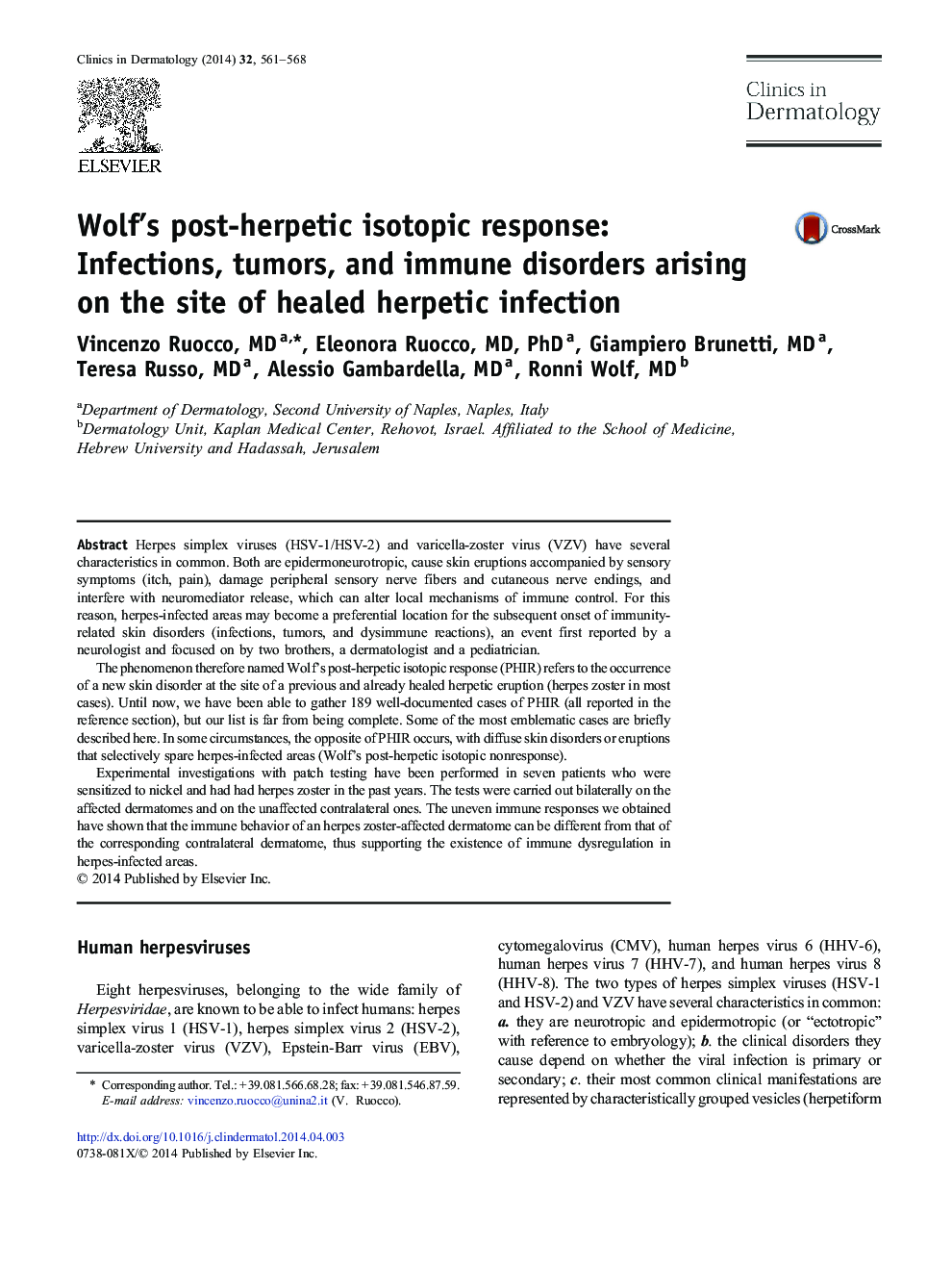| کد مقاله | کد نشریه | سال انتشار | مقاله انگلیسی | نسخه تمام متن |
|---|---|---|---|---|
| 3194134 | 1201378 | 2014 | 8 صفحه PDF | دانلود رایگان |

Herpes simplex viruses (HSV-1/HSV-2) and varicella-zoster virus (VZV) have several characteristics in common. Both are epidermoneurotropic, cause skin eruptions accompanied by sensory symptoms (itch, pain), damage peripheral sensory nerve fibers and cutaneous nerve endings, and interfere with neuromediator release, which can alter local mechanisms of immune control. For this reason, herpes-infected areas may become a preferential location for the subsequent onset of immunity-related skin disorders (infections, tumors, and dysimmune reactions), an event first reported by a neurologist and focused on by two brothers, a dermatologist and a pediatrician.The phenomenon therefore named Wolf’s post-herpetic isotopic response (PHIR) refers to the occurrence of a new skin disorder at the site of a previous and already healed herpetic eruption (herpes zoster in most cases). Until now, we have been able to gather 189 well-documented cases of PHIR (all reported in the reference section), but our list is far from being complete. Some of the most emblematic cases are briefly described here. In some circumstances, the opposite of PHIR occurs, with diffuse skin disorders or eruptions that selectively spare herpes-infected areas (Wolf’s post-herpetic isotopic nonresponse).Experimental investigations with patch testing have been performed in seven patients who were sensitized to nickel and had had herpes zoster in the past years. The tests were carried out bilaterally on the affected dermatomes and on the unaffected contralateral ones. The uneven immune responses we obtained have shown that the immune behavior of an herpes zoster-affected dermatome can be different from that of the corresponding contralateral dermatome, thus supporting the existence of immune dysregulation in herpes-infected areas.
Journal: Clinics in Dermatology - Volume 32, Issue 5, September–October 2014, Pages 561–568